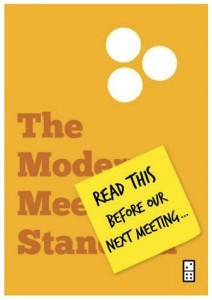Is God calling you to serve Him in ministry?
First of all, it’s a big YES.
God draws lost people to himself to save them, and his desire is that all saved people serve people. So, if you’re a believer, you are called! Obviously, however, there is a kind of “calling” that sets certain individuals apart for positions of ministry leadership. The New Testament refers to some people as apostles, prophets, evangelists, pastors and teachers. And they are given to the church to teach, preach, shepherd, equip, and instruct.
It should be noted before moving any further that everyone within the body of Christ is of equal worth and importance. We may serve different functions, but the gap between “clergy” and “laity” is an imagined one. All believers are “ministers” even though a few may receive a special calling to lead and to take responsibility for the health and welfare of the flock as undershepherds who follow Jesus.
Some of these leaders are paid and some are not. Some work for churches full-time, some part-time, and others on a volunteer basis. Regardless of their formal relationship with a particular church body, they are called to a higher level of responsibility for the maturing of the body of Christ. So they preach, they lead, they counsel, they give oversight, and they cast a vision for the fulfillment of the Great Commission.
Here’s the million dollar question among those who grapple with this subject: Is the call of God to ministry leadership discerned mystically? Or practically? Is God’s call heard supernaturally? Or naturally?
And again, the answer is YES.
I have friends who testify that God showed up in a moment of their lives in an unusual way and made his presence known to them in the moment of their calling. But this isn’t always the case.
Personally, I would describe my own experience of God’s calling in three phases:
I was hungry. I couldn’t get enough of the Bible, and I couldn’t seem to read enough about ministry or ask enough questions of my mentors. This hunger grew over several months as I found my way back into a local church. (As an aside, we ought to pursue this calling in the context of a local church community and under the mentorship of our pastors and leaders.)
I was convinced. I came to a moment when I simply knew that God wanted me to spend the rest of my life in full-time, vocational ministry leadership. It was on a bus ride to Louisville, Kentucky when I was a senior in high school. I jotted in the margin of my Bible the phrase, “3-1-95 Called to Preach”. I wrote it next to Jeremiah 1:5, which I was reading that day…
Before I formed thee in the belly I knew thee; and before thou camest forth out of the womb I sanctified thee, and I ordained thee a prophet unto the nations.
I became confident. Once I knew God was calling me, sadly, it took another seven months for me to find the guts to go public. In October of 1995, I preached my first, rather pitiful eighteen-minute sermon. But that experience lit a fire under me that burns to this day, and I still can’t hold it in.
While I believe God can and does often speak his calling into our lives in precise and unique ways, I believe that there should be some practical confirmation of that calling. After spending twenty years talking to younger leaders just getting started, I’ve developed a sense for those who are serious and those who aren’t – those who will go far because they lean into God’s grace and launch out in faith, and those who squander their time and energy on the sidelines.
When someone expresses an interest in ministry or talks of a calling, there are several questions that are quite appropriate to be asked, and through which a prospective leader can and should be screened, and I would divide them into five areas.
1. YOUR SPIRITUAL LIFE
Are you presently walking in the presence and power of the Holy Spirit? Are you soaking in God’s Word, praying regularly, and growing in grace and in the knowledge of Jesus? And does it show in your closest relationships? Would those nearest you (especially a spouse) describe you as Spirit-filled?
2. YOUR HEART
Do you WANT to lead the church? Do you crave it? Hunger for it? Is your appetite insatiable enough that you cannot be stopped? Do you desire to do the work of a Pastor?
3. YOUR ABILITY
Obviously we should never attempt to serve merely in the power of our own flesh, but to be effective, we must be sharpening our skills and abilities. This is why teachability is one of the most vital characteristics of ministry leaders. When you stop learning, you will stop leading.
4. YOUR PERSONALITY
Your unique personality doesn’t really determine whether or not you’re ready to lead in ministry. Rather, it relates to HOW you should lead. One of the most beneficial exercises I’ve ever gone through is the DISC profile (or one of dozens of similar personality and temperament assessments). I’m laid back (a high “I”), so I have to work at communicating clear expectations. I hate conflict, so I have to be intentional about confrontation. And I’m an introvert, so owning this and being at peace with it is important.
5. YOUR EXPERIENCES
A decade and a half ago, Angie and I started to go plant a church, and had we done so, it would have been disastrous. I only know that because of all that we’ve encountered in the last five years that I would have been totally unprepared for back then. All of your past experiences – the good, the bad, and the ugly – prepare you for what is next in your life.
If you’ve come to a place in your Christian walk where your hunger to serve and your conviction that God wants you to serve line up, and you have the maturity, the desire, the ability, the personality, and the experience necessary to prepare you, then GO FOR IT!
Every believer is “called.” We’re all called to serve others, to share the gospel, and to glorify God. And we’re all called to do these things “full time.” But thank God for granting the special opportunity for some to be fully immersed in the life of leading the body of Christ forward for the gospel’s sake!
> Read more from Brandon.

Tags: Brandon Cox, Ministry Calling, calling
|
What is MyVisionRoom? > | Back to Leadership >

































